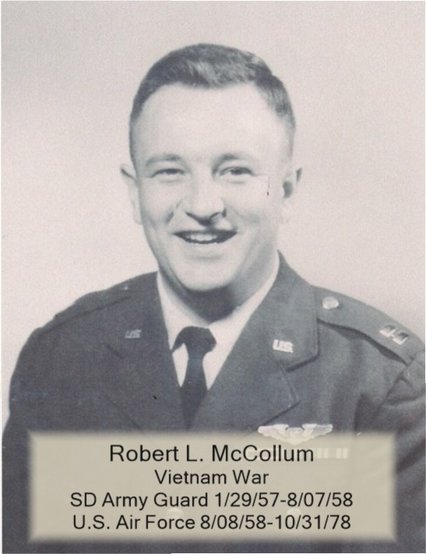MAJOR ROBERT LEE McCOLLUM

After the world turbulence of the 1940s and early 1950s, the world settled down, with the East, headed by the Union of Soviet Socialist Republics, squared off against the West, headed by the United States, in spreading their influence throughout the world. Because the two were not at war but were very active meddling in other countries’ conflicts, the time was called the “Cold War.” The two adversaries had developed weapons of such destructive power that a hot war was unthinkable. The United States adopted a policy of “massive retaliation” to deter the Soviet Union from taking any aggressive actions toward the United States and its allies; ie, the United States’ policy toward the Soviet Union was to launch a full scale retaliatory strike at the Soviet Union no matter what level of strike the Soviet Union directed at the West. The idea was to make any aggressive moves by the Soviet Union unthinkable because of the catastrophic consequences.
This was the world situation in 1958 when Robert McCollum began his career in the United States Air Force. Bob was from Springfield, South Dakota and was in the National Guard and attending Southern State Teachers College (SSTC) when he entered the Air Force and obtained a commission as a 2nd Lieutenant. Bob’s career would reflect the needs of America’s military in implementing its “massive retaliation” policy. After obtaining his commission, Bob was sent to Keesler AFB in Mississippi for advanced training as an Electronic Warfare Officer. He had stints in England and France from 1960 to 1964, where he was involved in finding and identifying enemy radars, surface to air missile systems, and fighter bases enabling the US to destroy them in time of war. Bob’s next assignments returned him to the United States for training duty in El Paso, Texas, to Malstrom AFB, Montana as Division Electronic Warfare Officer and to the University of Oklahoma where he got his BSEE.
The United States’ policy of “massive retaliation” worked brilliantly in keeping the Soviet Union and the United States from going to war with each other; however, it did not stop proxy wars with Soviet supported countries warring with US backed countries. That was the situation in Southeast Asia, where communist backed North Vietnam was threatening the US backed democratic South Vietnam. Bob spent a tour in South Vietnam as a wing scheduling officer. Bob spent long hours (625 combat hours) in an EC-121 operating listening devices on the Ho Chi Minh Trail. His primary responsibility was to electronically search for and protect the aircraft from SAM and AAA fire.
After his tour in Southeast Asia, Bob returned to the United States to finish his career as developer and procurer of airborne electronic warfare platforms at Wright Patterson AFB followed by a tour as a Program Element Monitor at the Pentagon. Bob retired from the air force on October 31, 1978 and spent the rest of his life building a small business and working as a broker in real estate in Virginia.
Dick Martin